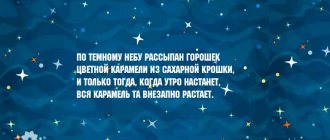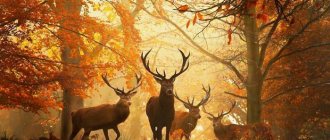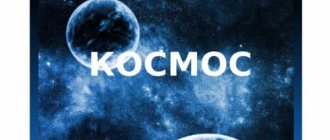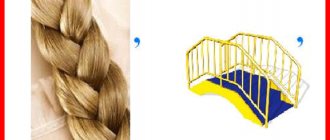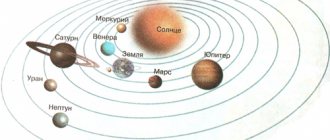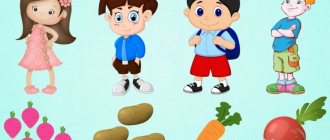Definition
A quiz is a game in which you need to give answers to questions, adhering to predetermined rules. The procedure and conditions for identifying winners may vary significantly depending on the situation. If the quiz is held at a family party, each child can compete for victory individually. It is logical to divide a large group of children into teams. At the same time, the excitement of players increases significantly.
When giving a quiz about space, try to create a playful atmosphere. Teams can turn into rocket crews, go on an imaginary journey, and encounter UFOs. For correct answers, give out tokens in the form of stars or funny aliens. It would be good if the game was played to mysterious cosmic music. Then children will be more willing to join in and receive more positive emotions.
Riddles for kids
A quiz about space for preschoolers should consist of simple questions. You can use pictures to have children guess the celestial bodies depicted on them. Riddles are perfect for little ones. For example, these:
- A golden ball looked in the window, and bunnies were dancing. What is this? (Sun).
- At night, a pale-faced ... (Moon) is visible in the sky.
- Golden peas are thrown into the night sky. (Stars).
- The planet flies around the Sun, covered in forests and mountains. Seas and fields flash by. It's called... (Earth).
- Fast, like a comet, it takes off into space... (Rocket).
- He is dressed in a spacesuit and goes to the rocket. Soon it will fly away to the stars and planets. (Astronaut).
Quiz Stars in Space
The Stars in Space quiz covers knowledge of astronomy, history, literature, and cinema.
Tests allow you to learn more about bright stars and constellations.
The quiz is designed for a wide range of audiences.
1. Where did the expedition with young cosmonauts go from Moscow, in the Soviet film of the same name?
+ Cassiopeia Orion Phoenix
2. What constellation is depicted on the state banner of the Commonwealth of Australia?
Southern Crown of the Bird of Paradise + Southern Cross
3. How many stars does the Bucket unit in the constellation Ursa Major?
Five + Seven Nine
4. Who is the author of the famous science-fiction-futuristic novel telling about space adventures in the Andromeda nebula?
A. Azimov + I. Efremov S. Lem
5. Where are the three stars concentrated that are at the minimum distance from the Sun?
Bootes + Centaurus Auriga
6. What is the name of the dark nebula that is clearly visible against the background of the Milky Way?
+ “Coal Bag” “Smoke Stack” “Black Cuttlefish”
7. What queen’s name does the group of stars that resembles a woman’s curls have?
Varvara's Braid Elena's Curls + Veronica's Hair
8. How many constellation silhouettes are there on the blue circle in the central part of the Brazilian flag?
3 + 9 12
9. With the appearance in the sky, which bright star in Ancient Rome announced the beginning of summer vacation for students - vacation?
+ Sirius Antares Altair
10. From what constellation did the puppy nicknamed Puppy, the hero of the story of the same name by L. Nemenova, move to Earth?
Great Dog Wolf + Hound Dogs
Quiz for older preschoolers
Five-year-old children already have a certain amount of knowledge about space. They will be happy to go on an interstellar journey. It is important that intellectual questions are interspersed with sports relay races and creative tasks (building a rocket, drawing aliens). After all, preschoolers quickly get tired of monotonous activities.
Below are questions for a quiz about space (with answers) for children of this age:
- What is the name of the planet we are all on now? (Earth).
- What color is our planet? (Blue).
- Which star do we all constantly revolve around? (Sun).
- Name the other planets in the solar system. (Jupiter, Venus, Uranus, Mars, Saturn, Neptune, Mercury).
- What is the name of the satellite of our planet that can be seen at night? (Moon).
- What were the names of the dogs that flew into space and successfully returned back? (Belka and Strelka).
- The first person to go into space. (Yuri Gagarin).
- What clothes do astronauts wear? (Space suit).
- What kind of machine can fly into space? (On a rocket).
- Does an astronaut need spoons and forks? (No, they eat food from tubes).
To space with children! A selection of amazing space-themed games to play at home
How can you tell your child about space in an accessible way? Of course, in a playful way. We offer a selection of amazing space-themed games to play at home.
First of all, we enter the space school, because, you know, whoever gets into the astronauts is not accepted. What should every astronaut know and be able to do?
The structure of the Earth and the Universe is basic knowledge, let’s start with it. It’s very easy and accessible to tell kids about this in a simple playful way - we’ll make a model of our planet (inner core, outer core, mantle and crust), as well as the cosmos itself (more precisely, a piece of it), arrange the stars, and arrange our luminary in the middle - the Sun and around it are all the planets of our system, for each planet we draw an orbit, simultaneously explaining what it is.
In such a game it is easy to talk about the cosmic structure, the names of the planets, to fantasize about whether there is life somewhere else besides Earth and what this life is like.
An empty box, a garland and a switched off light will help you see the constellations in your own room. We make small holes in the box so that the garland bulbs can be placed in them and, according to the diagrams (which are easy to obtain on the Internet), we lay out (or rather stick in the bulbs) the constellations we need. Children will listen and participate with much more interest if, for example, they are told about their constellations (Aries, Taurus, etc.). How did it appear, why was it called that way and not otherwise.
Let’s not forget about everyday questions - how do astronauts eat in space? This topic always arouses interest. We created our own space menu. They put jelly and fruit puree into ziplock bags and felt almost like real astronauts.
The only thing we lacked for complete happiness was the space flight itself. But this turned out to be not a problem.
Lego figures are us - dad, mom, children. We put on spacesuits, the role of which is played by foil. Children cope with this quickly. The only things missing are rockets, Lego bricks with a countdown and “puuuuck!” and here it is - endless space.
And first of all, we will fly to our faithful satellite, to the Moon.
To help children navigate the distance from the Earth to the Moon, we can give several examples. To fly to the Moon by plane, it will take about 20 days, by car at a constant speed of 90-100 kilometers per hour - up to six months. HALF A MONTHS!
One of the most amazing and at the same time most dangerous things on the Moon is lunar dust. As everyone knows, sand penetrates everywhere on Earth, but dust on the moon is an extremely dangerous substance: it is fine, like flour, but at the same time very rough. Thanks to its texture and low gravity, it penetrates absolutely anywhere.
The role of lunar dust was played by rye flour, placed in a container and provided to the children for study. And we finally corrected the historical injustice - we placed the flag of the Russian Federation on the lunar surface (she said that the first and only ones who landed on the Moon were American astronauts).
NASA had numerous problems with lunar dust: it ripped astronauts' boots almost completely apart, penetrated ships and space suits, and caused "lunar hay fever" in unfortunate astronauts if they inhaled it. It is believed that with prolonged contact with lunar dust, any, even the most durable object can break.
They cleaned astronauts and spaceship elements from lunar dust, left marks from asteroids (throwing stones into flour), buried and dug up their arms, legs, astronauts and in general everything that was nearby. There is a version that flights to the Moon stopped because the astronauts met SOMETHING there that scared people. Something inexplicable. As Neil Armstrong said, “We were given the impression that the place was taken.” Well, my astronauts discovered SOMETHING - with many eyes, making strange sounds.
We discovered this and quickly shot into the rocket. We flew on.
And now we have arrived to our sister planet, Venus. Earth and Venus have a lot in common; they are the same in size.
The role of Venus was played by a box of soda. There are many craters on the surface of Venus, scientists believe that Venus was formed mainly after volcanic processes, due to a large number of volcanic eruptions, lava spills, the formation of craters and mountain ranges on the surface of the planet.
The pale yellow clouds that surround the planet contain droplets of sulfuric acid that fall on Venus in acid rain. The children first filled the craters with soda, and then poured colored water with citric acid on top. This was our acid rain. There was a stormy reaction, which greatly delighted the young cosmonauts.
Venus, the brightest of the planets. It shines so strongly that on a moonless night it can easily cast a shadow on the Earth. And it is also perfectly visible even without special equipment, the brightest star to the left of the Moon.
When our Venusian life ended, we boarded our rocket again and set off today for Mercury.
Mercury is a rocky planet; as the planet's core cools and contracts, Mercury's surface becomes wrinkled. Scientifically, these wrinkles are called “scarps.” Scarps can be very high and reach several hundred kilometers.
For us, the role of Mercury was played by a container with oatmeal; we placed a switched-on garland under the container and the look was truly not earthly.
There is no evidence of life on Mercury. Daytime temperatures can reach 430 degrees Celsius and drop to -180 degrees Celsius at night. It is unlikely that life as we know it could survive on this planet.
But oddly enough, it was we who witnessed the existence of this very incredible life. Yes, yes, we met THEM - aliens.
It's amazing how the human brain works - everything we come up with we have seen or heard somewhere and once. So it’s difficult to come up with this without relying on anyone’s experience, but simply out of thin air. But children succeed in this as well as possible.
- What if the planet where aliens live doesn’t need eyes? - the children decided.
“How are they not needed?” I ask. “How will they look?”
- There’s nothing to see there. “There’s nothing interesting there that needs to be looked at,” came the answer.
A child’s imagination has come into play, something you can’t keep up with. The children created something extraterrestrial. An alien without a body. Yes, he doesn’t need it. In addition, as my daughter stated, there is no gravity on the planet where it lives, and therefore this alien must be sticky in order to have good adhesion to the soil.
And there are no eyes or mouth, let alone ears and nose. But if you put eyes on it, it can see, if you put ears on it, then it can hear, and it speaks with the help of thoughts. And it takes the form of the vessel in which it is placed.
Our alien was made of paste and borax (sodium tetroborate, which is sold in any pharmacy), had a viscous structure, but almost did not stick to your hands.
His eyes grew larger and smaller, his legs, arms and other protruding parts of his body periodically appeared, and sometimes his heart and kidneys could be seen. And a bunch of other organs for which the children, of course, came up with names, but due to the difficulty of pronunciation, I will not be able to reproduce them (and the children forgot after 5 seconds what they just came up with).
When it became clear that the table was no longer enough for them and soon all this disgraceful splendor would be on the floor and walls of the kitchen, I brought a large plastic container. The daughter took out silicone baking molds, which immediately turned into UFOs, our disembodied comrades plunged into them and set off to fly across the Galaxies. With the addition of water, the molds slid along the bottom of the container as if on ice.
This is where I’ll probably end the story about our space travels. As can be seen from the above, flying into space is available to everyone, even without leaving your apartment.
Quiz “Journey through the Solar System”
During lessons, younger schoolchildren get acquainted with various cosmic bodies and learn the basics of astronomy. Competition between teams will allow you to repeat the material in a fun way.
A quiz about space for primary grades can take the form of a virtual trip to the nearest planets with stops on each. Here is a tentative list of questions:
- What is the name of the star closest to Earth? (Sun).
- How many planets orbit around it? (8).
- The smallest and fastest of the planets, where the heat reaches 350 °C during the day and the frost at night is -170 °C. (Mercury).
- The brightest planet that can be seen from Earth without a telescope. She was named after the beautiful goddess of love. (Venus).
- It is third from the Sun and has one satellite. (Earth).
- This planet is called “red” because its surface is covered with orange-red sands. The celestial body is named after the formidable god of war. (Mars).
- The largest of all planets, consisting entirely of gas. (Jupiter).
- This celestial body is known for its rings of rocks and pieces of ice. (Saturn).
- The coldest of the planets, which rotates on one side. (Uranus).
- This blue planet is named after the god of the seas. It has the strongest winds in the entire solar system. (Neptune).
Quiz game “Space travel” (grades 1-4)
Game - quiz for students in grades 1-4
"Space trip".
Prepared by Evlashova V.M.
Additional education teacher
MOU DO Palace of Children's and Youth Creativity
Komsomolsk-on-Amur
Target:
introduce children to Cosmonautics Day.
Tasks:
1. Expand children’s understanding of astronautics. 2. To form feelings of patriotism and citizenship. 3.Develop students' creativity, attention, memory, dexterity,
ingenuity through the use of game elements. 4. Organize competitive activities between teams, create
active interaction of students in a team, promote cohesion
class team.
Equipment:
computer, projector, screen, balloons, pens,
sheets of paper, task cards, construction sets, stars, medals for
awards.
Form:
quiz game, competition.
Progress of the event.
Teacher's opening speech.
- Hello guys! I am glad to welcome you! Do you know what holiday the whole world will celebrate? Right. Aviation and Cosmonautics Day.
— Now we’ll talk about how people began to explore outer space. Since ancient times, the mysterious, enigmatic world of planets and stars has attracted the attention of people. Nowadays, people know that the Earth rotates around the Sun and on its axis, but earlier people believed that it was motionless. When our ancestors began to recognize the Earth, they imagined it as an inverted bowl, supported by a giant elephant, standing importantly on the shell of a huge turtle. This turtle swims in the sea-ocean, and the whole world is covered with a crystal dome of the sky with many sparkling stars. (Image demo)
Thousands of years have passed since then. People began to build ships and,
travel around the world, evidence gradually began to accumulate that the earth was not flat, but spherical.
The famous ancient Greek scientist Aristotle (IV century BC)
was the first to prove that the Earth is round. While observing the Moon, he noticed that the shadow from the Earth falling on it is always round. And only the ball casts a round shadow. In addition, he noticed that ships sailing into the distance always disappear over the horizon.
Another great astronomer, Nicolaus Copernicus, proved that the Earth is in space and revolves around the Sun, making one revolution around it every 365 days.
Many years later, people learned to build aircraft, hot air balloons, airships, airplanes and
began to fly in the Earth's air envelope (atmosphere). But people don't
They stopped there, they were attracted by space. — Guys, what is astronautics? (children's answers)
Cosmonautics
is a set of branches of science and technology that ensure the exploration of outer space and extraterrestrial objects.
— Tell me, who was the first person to fly into space? (children's answers) Correct, Yuri Alekseevich Gagarin
. On April 12, 1961, a citizen of the USSR, Yuri Alekseevich Gagarin (portrait), flew into space. The name of this man is known all over the world. Since childhood, Yura has been interested in airplanes. He was very inquisitive and grasped everything
fly. At the age of 15 he entered a vocational school. But passion
aviation attracted him, and he entered the military aviation school.
He was a brave, resourceful, cheerful man. Rarely got angry and didn't really
He loved quarrels; on the contrary, he made peace with everyone with jokes and laughter. He was attentive to his comrades and helped them in everything. He was perfectly prepared physically. On April 12, 1961, the Vostok rocket flew around our planet in 108 minutes (1 hour 68 minutes). The world held its breath. The world listened to the voice of man,
flying over oceans and countries, and people in these countries repeated:
"Gagarin", "Yuri", "Russia". The earth recognized a simple, charming man who paved the way to the stars. Therefore, on April 12 we celebrate ‹‹Cosmonautics Day››.
Our event is dedicated to this holiday.
-Now you will be divided into two teams and will compete in courage,
dexterity, dexterity and ingenuity. For victories in competitive tasks you
you will receive stars, at the end of the event we will sum up the results and reward
teams. (team formation)
Task No. 1. Warm up. The task is to come up with a name and motto for the team.
- Guys, do you know what “space” is?
(children's answers) In general, space
is a space that extends endlessly into everything
sides, including galaxies and stars, black holes and planets,
cosmic dust and other objects. -Today we will travel into outer space. But for
For this we need a rocket. Task No. 2. Rocket structure. Teams are given a constructor. The task is to assemble a rocket and give it a name (“Apollo”, “Vostok”, “Soyuz”, “Mir”, ...).
-Our missiles are ready, we need a captain.
We choose a captain. -And now I’ll tell you interesting facts. Well, now we can go. Good luck! Stop #1.
Mars. Planet Mars is one of the smallest planets in our Galaxy. Mars is the fourth from the Sun. According to scientists, this is the only celestial body on which life could exist. After all, in the past on the surface
the planet had water. This conclusion can be drawn based on the fact that
large ice caps exist at the poles, and the surface is covered
with many furrows that could have been dry river beds. - Look, they left us a letter on this planet! Only it
encrypted. Task No. 3.
Encrypted letter. The team's task is to decipher the letter. Teams are given letters. The cipher and the encrypted letter itself are written on the sheet.
(Help! We have an accident! Our ship crashed on the planet
Mercury.) - We need to help the people whose ship crashed on Mercury. A
To get on it and help the team, we need to answer questions. Task No. 4. Questions. The goal is to answer the question faster than your opponent. The teacher reads the questions and the children answer. Questions: 1. Earth satellite? (Moon) 2.What was the name of the man who made the first flight into space and
returned safely? (Yuri Alekseevich Gagarin) 3. What is the smallest and most distant planet from the Sun? (Neptune, Pluto lost their “planet” status)) 4. How many planets are there in the solar system? (8 planets) 5.List the planets of the solar system? (Mercury, Venus, Earth,
Mars, Jupiter, Saturn, Uranus, Neptune) 6. What was the name of the ship on which Yuri Gagarin made his first flight into space? (“Vostok - 1”) 7.Which planet is named after the goddess of love? (Venus) 8. Name the names of dogs that flew into space before people and which
returned safely? (Belka and Strelka) 9.What was the name of the first female cosmonaut who flew into space? (Valentina
Tereshkova) 10. How do astronauts eat food? (using tubes) - Well done! Let's continue our journey! Stop #2. Jupiter. Jupiter, the fifth planet, is the largest. In volume
Jupiter would fit 1,300 Earth-like planets, and its mass is 317 times that of Earth. Basically this planet
consists of gas, the only solid part is the rocky core.
- Guys, in order for us to go from Jupiter to another planet, we will have to find the lost words. Task No. 5. Find the words hidden in the letters. The teams' task is to find 6 words in the table, plus a point for two additional words. The teams are given cards showing the following table.
(Space, sun, planet, earth, rocket, spacesuit, orbit, moon) -We continue the journey. Stop #3. Saturn. It is the second largest gas giant, named after the ancient god of agriculture. It consists of hydrogen and helium, but on its surface there were
Traces of methane, ammonia and water were found. The most important feature
Saturn is characterized by the presence of bright rings. The four rings of Saturn are the most...
amazing phenomenon in the solar system. What is unusual is that the internal
the rings move faster than the outer rings. - Guys, our next task is to solve riddles. Task No. 6. Puzzles. The team's task is to solve as many riddles as possible. The teacher reads riddles, the children guess. Riddles: 1. An object flies through the thickness of the Ice years in space. Its tail is a strip of light, And the name of the object is... (Comet) 2. A man sits in a rocket. He boldly flies into the sky, and in his spacesuit he looks at us from space. (Cosmonaut) 3. The blue cloth is nailed down with golden nails. (Stars in the sky) 4. The very first in space Flew at great speed A brave Russian guy, Our cosmonaut... (Gagarin) 5. The blue planet, Beloved, dear, She is yours, she is mine, And it’s called... (Earth) 6. I was walking past, I saw a miracle - A round dish hanging in the sky. (Moon) 7. Above the forest, above the mountains, a carpet spreads. It is spread out over you and over me, Sometimes it is gray, sometimes it is blue, sometimes it is bright blue. (Sky) 8. Consists of points of light, The room of planets is full. (Space) - Let's fly further! Stop number 4. Uranus. The seventh planet from the Sun is Uranus. She's the coldest of them all
the temperature drops to -224 °C. Uranus belongs to a separate category of ice giants.
An amazing feature of this celestial body is that it rotates
it lying on its side. Like all giant planets, Uranus has rings and many satellites. As many as 13 rings
orbits around it, but they are not as bright as Saturn's,
the planet supports 27 satellites. - Look, all the letters are mixed up. Aliens probably don't know
Russian language. You need to put the consonants and vowels like this. To make words. Task No. 7. Changelings. The team's task is to form words. Teams are given cards with words. Changeling words: SOSMK - space ANAFKSDR - spacesuit IDONAMUG - humanoid ATIORB - orbit ONAVTKOSM - cosmonaut TSEOLSN - sun - Well done, they put things in order in the letters. We fly further. Stop No. 5. Neptune. Neptune is surrounded by bright blue clouds. It is distinguished by the violence of the strongest hurricanes, the speed of which often reaches the size of a couple in an hour.
thousand kilometers. All the winds blow the planet along the equator,
towards her movement. — On this planet we will solve a crossword puzzle. Guys, here you will need to think a little, but who was attentive quickly with this
will handle it. And only after this we will be able to fly to Earth, home. Task No. 8. Crossword. The team's task is to solve the crossword puzzle. The teacher distributes crossword puzzles, the children solve them. Questions (horizontally): The key word is UNIVERSE. 1.Is it a rock or metal block moving around the Sun? (Asteroid) 2. The largest planet in the solar system? (Jupiter) 3. Earth's satellite? (Moon) 4.The only planet in the solar system that rotates counterclockwise? (Venus) 5. Is there artificial and natural? (Satellite) 6. What is the coldest planet? (Uranus) 7. A celestial body of small (by cosmic standards) size, consisting of ice, dust and metal inclusions? (Comet) 8. The planet we live on? (Earth)
-Well done boys. We completed the task. Stop number 6. Earth. The only place in the solar system, and indeed in the entire known
to astronomers, the universe where life exists is planet Earth. Task No. 9. Complete the word. The team's task is to unravel the words. The teacher distributes cards, the children solve the words.
(1. Space. 2. Space suit. 3. Airplane. 4. Cosmonaut.)
-Well done boys! We completed all the tasks and returned to Earth. - And now we will sum up our journey (points are counted). Children are awarded medals (winner medal, participant medal).
Space exploration quiz
Of course, not all of the questions listed are accessible to first-graders. But they are perfect for 3rd grade students. A quiz about space may also include questions related to its exploration. For example, these:
- What instrument can you use to explore the starry sky? (Telescope).
- What is the name of a device that can move on the surface of the Moon? (Lunokhod).
- The place from which rockets are launched. (Cosmodrome).
- What is the name and patronymic of the first cosmonaut? (Yuri Alekseevich).
- The date when man first went into space. (04/12/1961).
- What was the name of Gagarin's ship? ("Voskhod-1").
- How many times did he circle the globe? (Once).
- Who was the first to leave the ship into outer space? (Alexey Leonov).
- The name of the man who first stepped onto the surface of the Moon. (Neil Armstrong).
- Which woman was the first to go into space? (Valentina Tereshkova).
Games at home for children and more...
On Cosmonautics Day, every year all children's institutions hold exciting and educational competitions and quizzes on the topic of cosmonautics. I bring to your attention interesting questions for a quiz about space for children. Play with pleasure and joy!
